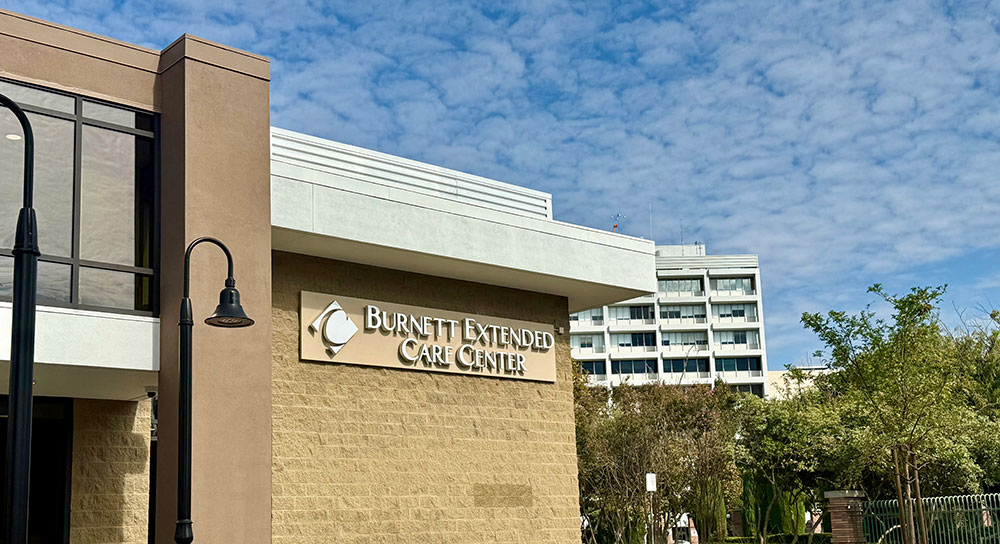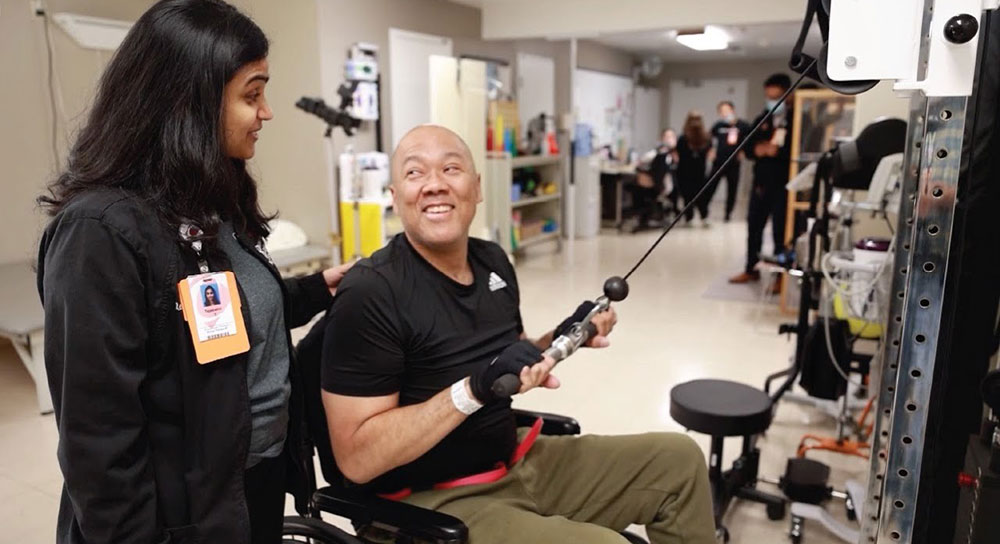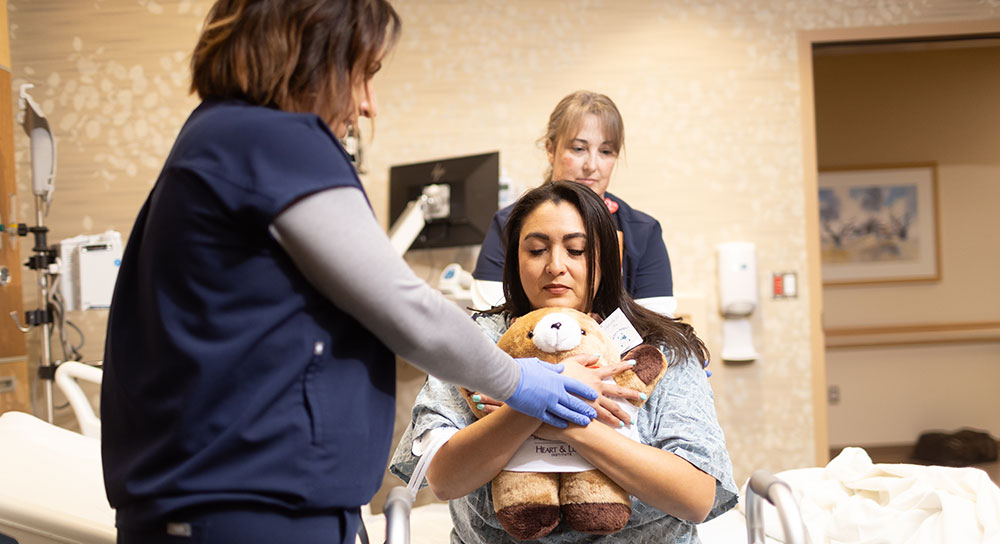As a FedEx delivery worker, Michael Yamane uses his back and hips to load heavy boxes to and from his delivery truck to people’s homes. He says when people received their COVID-19 stimulus checks they ordered a lot of heavy items — TVs, furniture and above-ground swimming pools. The weight of the heavy boxes took a toll on his body.
Yamane hurt his shoulder but didn’t realize he had torn something at first. He continued to work through the pain until he could get it fixed.
He had shoulder surgery last November and returned to work in February 2021. In March, Yamane started to wonder, “Why is my hip so sore?”
An X-ray showed his ligaments and cartilage were deteriorating and he was going to need another surgery for a total hip replacement on his left side. Yamane figured this injury was from trying to stay in shape: “It was many years of jogging and exercising and stuff like that constantly.”
Total joint replacement includes rehab to get moving again
Yamane’s surgeon with Community Medical Centers’ total joint replacement program told him “‘It’s not as bad as we think.’ It’s a process where they take everything out and they put the new titanium ball in.”
Yamane said he knew exactly what to expect before and after surgery as far as rehabilitation. After surgery, there was a team of physical therapists in the hospital to get him up and moving right away. “The next morning [after surgery] they try to get you propped up and standing and see if you can step,” Yamane says. “So I did that slowly … We took a few steps to the therapy room and yeah, I started walking already.”
Erika McFarland, physical therapist, explains that instead of recuperating in bed, patients are urged to see movement as medicine. “Current research shows it’s much better to get moving quickly to get your joints moving and your muscles moving, and that actually helps you recover from surgery.”
Continuing rehab at home is key to regaining strength and mobility
Yamane was discharged with a walker to continue walking at home. Outpatient physical therapy was lined up for him as well.
“After you’re done at the hospital then we are able to determine if you need to go home for a little bit more therapy at home or, if you’re high functioning, then you can transition into an outpatient physical therapy program,” says McFarland.
Yamane was really active before his surgery, which helped with his recovery. He walked at first with the help of a cane and then transitioned to working with McFarland at the Clovis Community Medical Center’s Outpatient Physical Therapy facility.
Having a personalized physical therapy plan can help your body heal properly, says McFarland. “We really work on the goals you want … so if you go back to work or you want to go back to your grandkids or hiking, we’re here to tailor your exercise program to that,” she explains. “We kind of focused on a whole body approach [with Yamane] … so he had the energy and ability to go back to work.
Yamane did a lot of stretching and balancing, and worked on strengthening and endurance with hopes of returning to his active lifestyle of biking and walking on the beach. Besides working on his hip mobility, he also worked on his core muscles to help with stability.
Sticking to rehab exercises also improves outlook after surgery
McFarland says, “It’s crucial that post-surgery patients stick to their rehabilitation plan because it will help them heal safer and faster. It’s also important to practice what they learn here.” She adds, “There’s lots of research that shows when you’re up and moving and getting your body going that your mental health can also improve as well.”
Yamane agrees. “I have more confidence in getting up and just going about my day.” And even though it was hard work, he says of his therapy, “I’m really grateful, really, really grateful because it helped me gain confidence and I can feel more strength in my legs. Before, I couldn’t even push myself up from my knees.”






